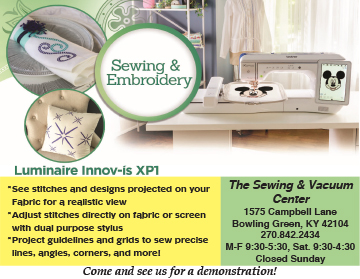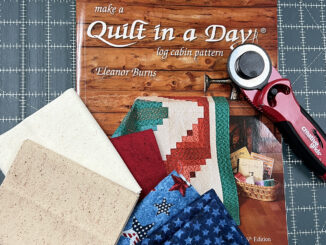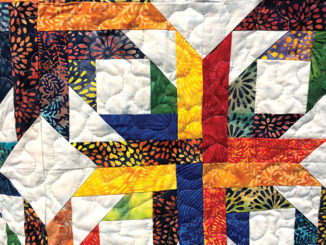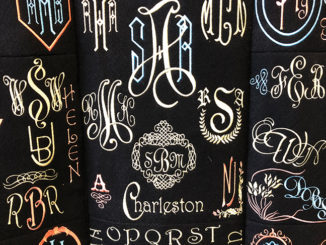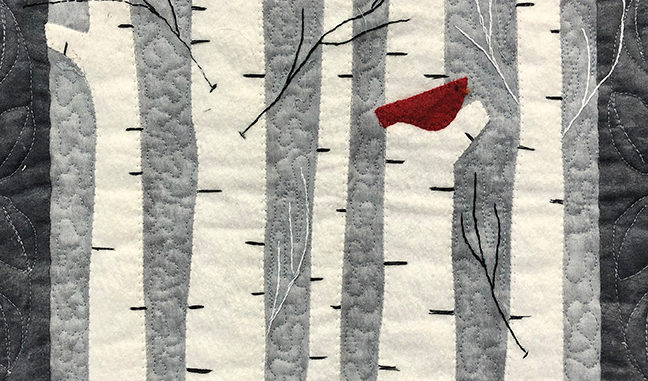
For thousands of years, natural fiber fabrics of cotton, wool, linen, and silk clothed our ancestors. With the advent of industrialization, new synthetic fabrics were developed for our clothing and decor but natural fiber fabric still dominates our sewing and personal use. Part III continues our look at natural fiber fabrics by examining wool.
Wool is one of the oldest known natural fibers, dating back to ancient Mesopotamia and Babylonia. Sheep have fed and clothed mankind throughout the millennia. Wool is, of course, sheep hair, with some very appealing attributes. These fibers can move moisture away from the body and are water resistant. Wool can repel light rain and snow. The one characteristic we are all familiar with is the ability of wool to insulate and retain body heat. Wool resists wrinkling, dries easily and shapes well with steam (a plus for sewing!).
Lightweight and heavier fabrics can be made from wool fibers. Woolen fabrics are made from shorter yarns and are used to make the heavier fabrics with a slightly fuzzy surface. These are often used for jackets, coats, blankets and rugs. These may be less expensive than the worsted wools. The worsted wools are made from longer fibers that produce a lighter weight fabric such as twill, suitings and crepe. You may find these fabrics used for both clothing and upholstery items.
Shrinkage can be a problem with wool fabrics. Before you begin your project, you will need to know if the fabric will shrink. Check labels when you purchase fabric to see if it has been “pre-shrunk.” You can prepare the wools by steam pressing or having a dry cleaner do it for you. Using a “with nap” layout works best for your garment pattern pieces.
For clothing sewers, wool is a great fabric to work with, particularly the better quality wools. You will have a garment that will last many years. When sewing with wool, use a needle designed for the weight. If using a fine wool crepe, a 60/8 or 70/10 needle may work best. For medium to heavy weight wools, 90/14 will be best. A good quality all-purpose thread to match your fabrics will also ensure good results.
Quilters have used wool for many years in their projects. In colder areas, it’s not uncommon to find quilts made from wools or sewn to a wool blanket for backing. Today’s quilter’s primarily use wool in two ways: small hand/machine projects and batting.
Creating small projects with wool appliqué is a favorite for many quilters. Felted wool or wool felt can be used for these. Felted wool is the traditional woven fabric, washed and dried to shrink, which creates a dense, somewhat “fluffy” fabric surface. This can be purchased – many quilt shops will carry this on the bolt or in small pieces. You can create this fabric yourself from either new yardage or older wool garments by washing and drying the fabrics. The quality of your final fabric will depend on the quality of the original piece. Wool felt, though, is a different type of fabric. The fibers are compacted together to create a denser product. This can also be purchased by the yard or in smaller pieces. Check the bolt end for fiber content, as the wool felts often have other fibers blended with them. Both work nicely for hand appliqué, as they don’t tend to ravel.
Another use for wool in quilting is wool batting. Many quilters find this batt wonderful to use. The wool is “fluffier” than the cotton battings so quilting designs are better defined. Machine quilters, in particular, find this batting really makes the quilting come alive. If you are thinking that this will make the quilt too hot, remember that wool is a natural fiber and “breathes.” It does provide insulation but you will find that a wool batt will make a quilt usable for most of the year.
As with anything, wool does have a few down sides. One is the cost. Wool fabrics and battings will be more expensive than other fiber types but you will generally get longer use. Another is that many people have a reaction to wool. If you are making something (garment or quilt) as a gift, check with the recipient to see if they have a wool allergy.
Enjoy your creative journey with wool fibers and fabrics. We can help you select the right needle, threads, and, of course, machines to make your project a success!
-submitted by The Sewing & Vacuum Center

